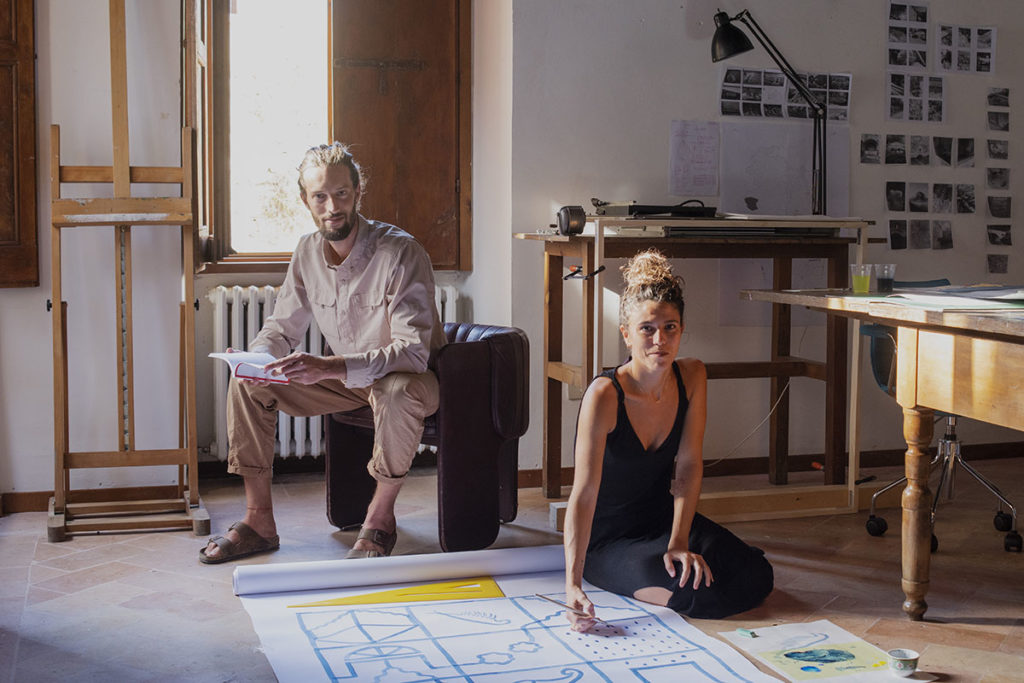Umru – tales from
a hydrosocial landscape
Cecilia Ceccherini & Alberto Valz Gris

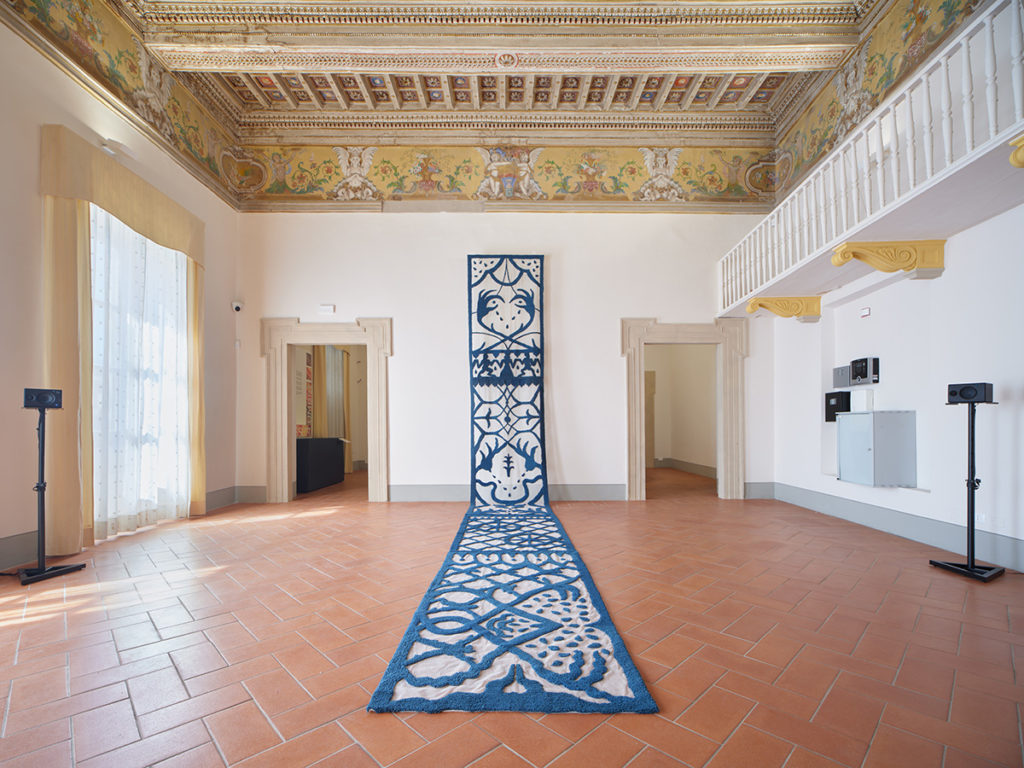
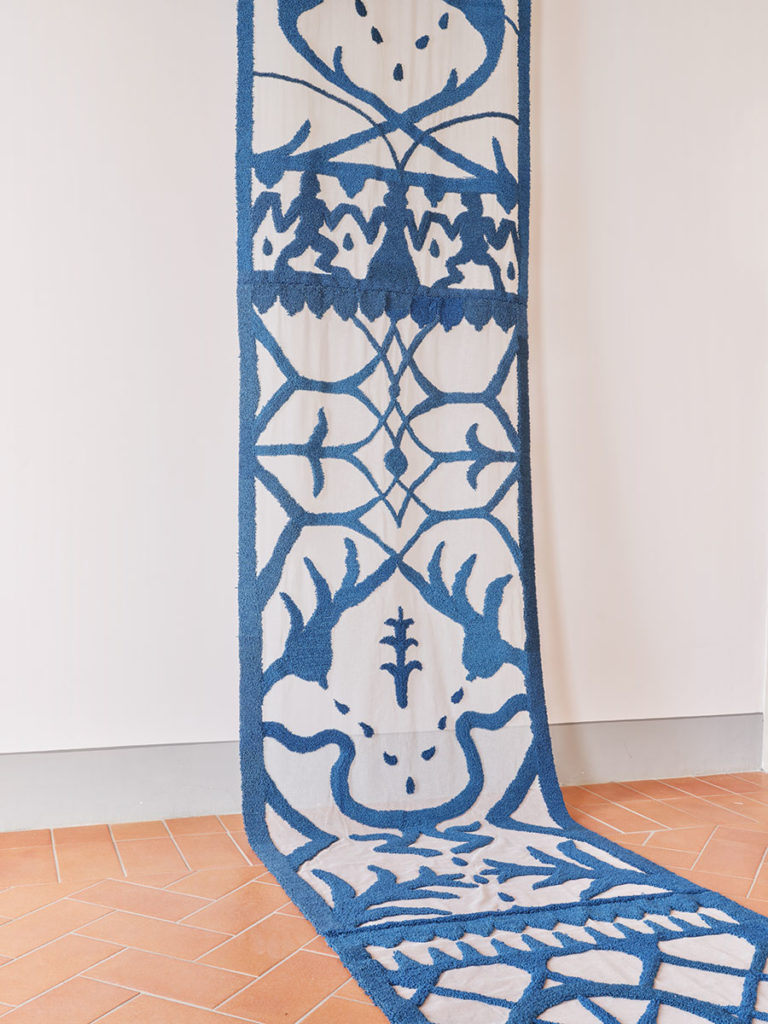
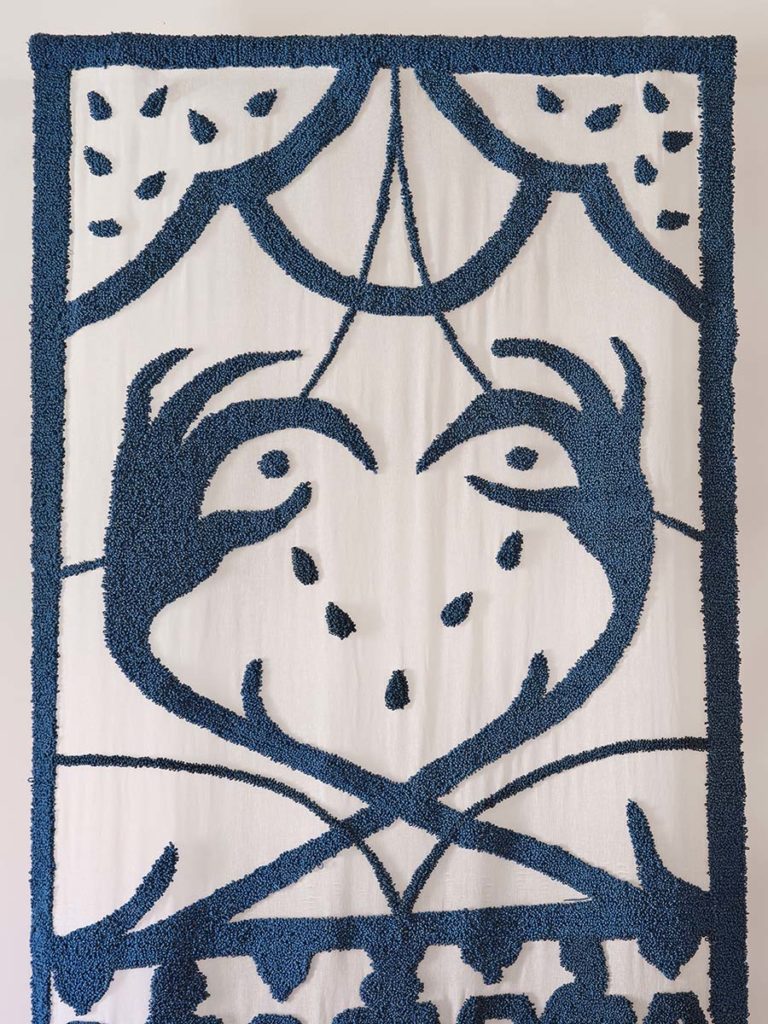
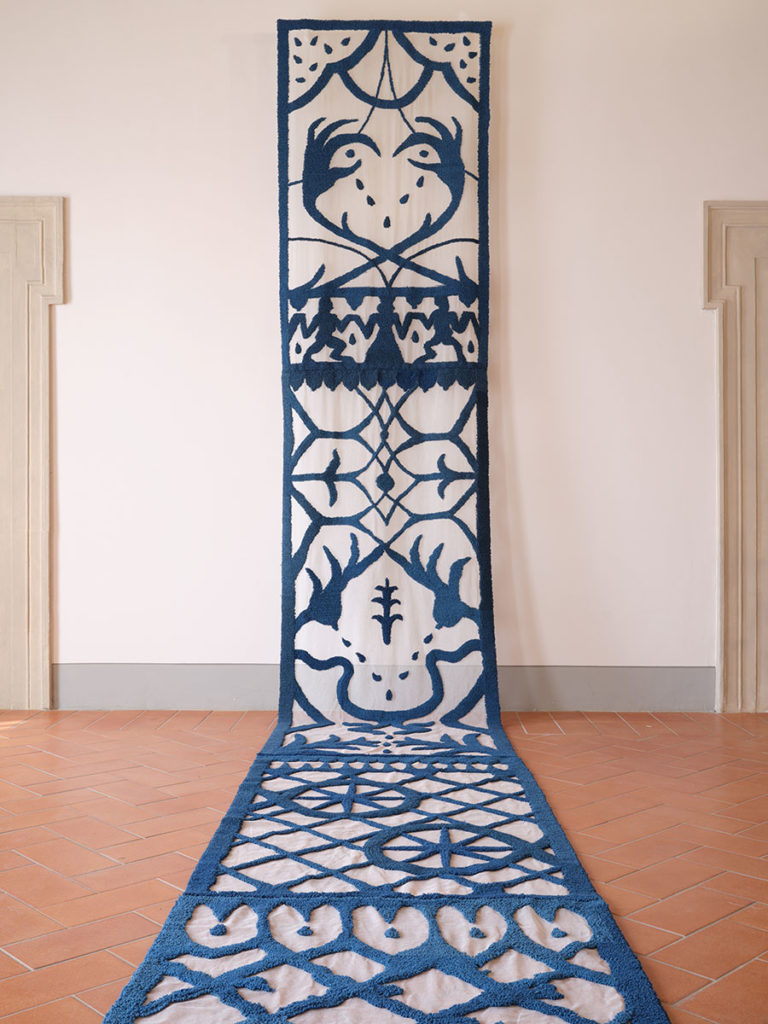
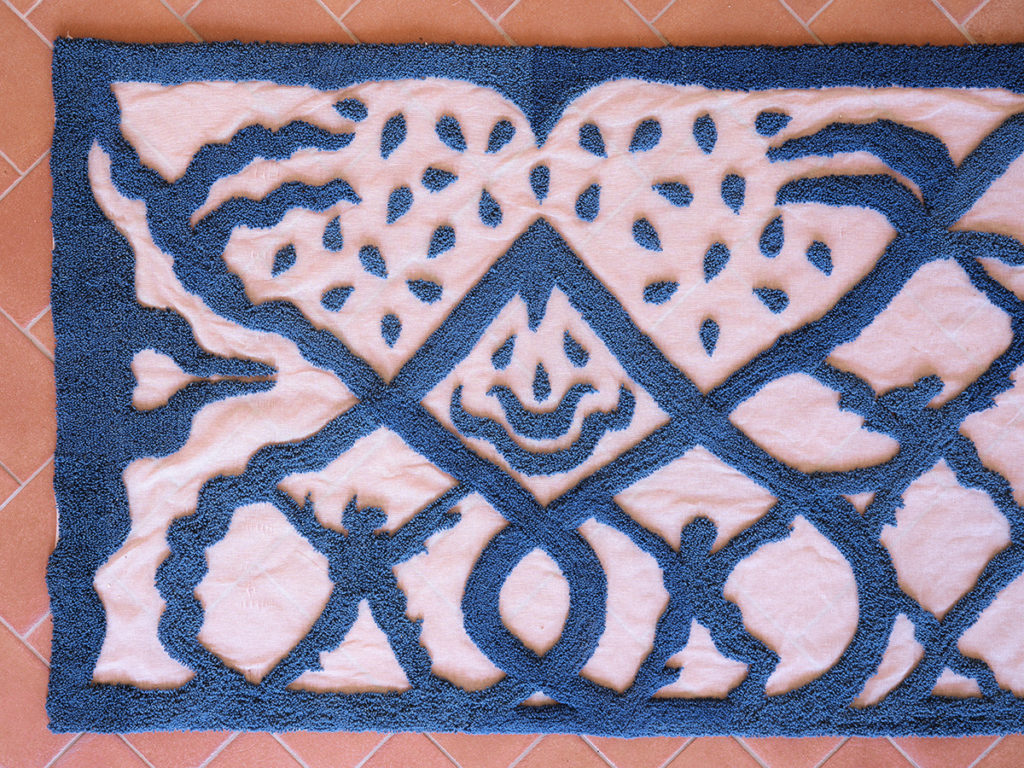
MUTECO Museo del Tessuto e del Costume, Spoleto
29 June – 30 September, 2024
In partnership with Musei Civici di Spoleto, Spoleto Festival dei Due Mondi and with giulia deval, Henry Albert, Guglielmo Diana
Opening: 29.06, 10.00–19.00 (tour 11.00)
Opening hours: Friday to Sunday 10:30–13:00/16:00–18:30
Event: 06.07, 17.00, Radio 2Mondi, Piazza Mentana: Cecilia Ceccherini and Alberto Valz Gris in conversation with Saverio Verini (Director, Musei Civici di Spoleto) @fuorifestival
Realised as a large-scale tapestry and sound installation, ‘Umru: tales from a hydrosocial landscape’ is a collaborative project by artist Cecilia Ceccherini and geographer Alberto Valz Gris exploring how communities are defined by their access to water. The exhibition highlights the realities of water scarcity, whilst creating a poetic and reflective space to think through human-environment interactions in the context of climate collapse.
Political ecology describes water as a multiform and dynamic assemblage of both humans and nonhumans, of bodies and machines, of historical transformations and unpredictable futures. This reality is best captured by the term used by Ceccherini and Valz Gris, ‘hydrosocial landscapes’: “We are interested in asking how combining social scientific and mythopoetic ways of knowing can contribute to the understanding of current crises and shape alternative visions”.
Taking Spoleto and its environs as their starting point, Ceccherini and Valz Gris draw on diverse local subjects including the water symbolism in the story of St Felice and Mauro and the dragon, contested water sources used for the commercial bottling of drinking water, and the survival of a rare mountain shrimp in the Monti Sibillini national park. These stories are weaved into Ceccherini’s tapestry, which is titled Montagna madre di tutte le acque (Mountain, mother of all waters) using semi-abstract, interconnected symbols which highlight the nurturing, life-giving properties of water. Made with wool coloured blue using the sole plant of woad (guado) by the artist and her collaborator Maïté Oucèni (see below), the colour and forms of the tapestry reference a variety of textile traditions from across the globe, including the ‘tessuti alla Perugina’, Umbrian textiles made between the 14th and 16th centuries which can be viewed in the first room of MUTECO. Meanwhile, Valz Gris’s experimental writing – interpreted by author Henry Albert and performed by sound artist giulia deval – processes these subjects and other hydrosocial references into five distinct feminine voices. These voices, brought together in the audio installation titled Le Sibille ballano e la terra trema (The Sybils dance and the Earth trembles) can be listened to collectively or individually. In some cases they speak Italian, in others they use the voice to express the subject in an onomatopoeic or allusive manner. The female characters, which also informed the development of Ceccherini’s tapestry, can be identified accordingly:
LA MADRE / THE MOTHER
A young mother recounts how she met her daughter’s father at a well whilst he was traveling between two monasteries. Their encounter produces much rage and at least one miracle.
LA NUTRICE / THE WET NURSE
A voyage through a dream and a dream through a voyage. A wet nurse takes care of two saints, following them across the ocean and deep into a sunken swamp to confront a dragon.
LA PREGHIERA / THE PRAYER
A prayer in five parts directed to five recipients, incorporating more than one expression of spirituality, all recognising water as sacred.
LA SIBILLA / THE SYBIL
When an oracle speaks, one is not supposed to understand the superficial value of words but rather the unexpressed presence of a message. It is like water coming from the belly of a mountain.
LA PIETRA / THE STONE
What does it take to turn a boulder into a pebble? Its journey through water, told through sound, understood through listening, and implying empathy.
The characters take inspiration from a legendary fortune-telling prophetess ‘Sibilla’, a medieval sibyl who gives her name to the Monti Sibillini close to Spoleto. As her counterparts did in Ancient Greece, these oracles predict the future and act as a sorceress and muse. Sibyls’ speeches were unintelligible, they used to speak in a vague and incoherent way to give signs more than solutions for the future. In the same way, the stories from ‘Umru…’ are whispered to us. The sibyls that relate these stories are inviting us to embrace an attitude of care and wisdom in relation to the earth and all the living beings that inhabit it.
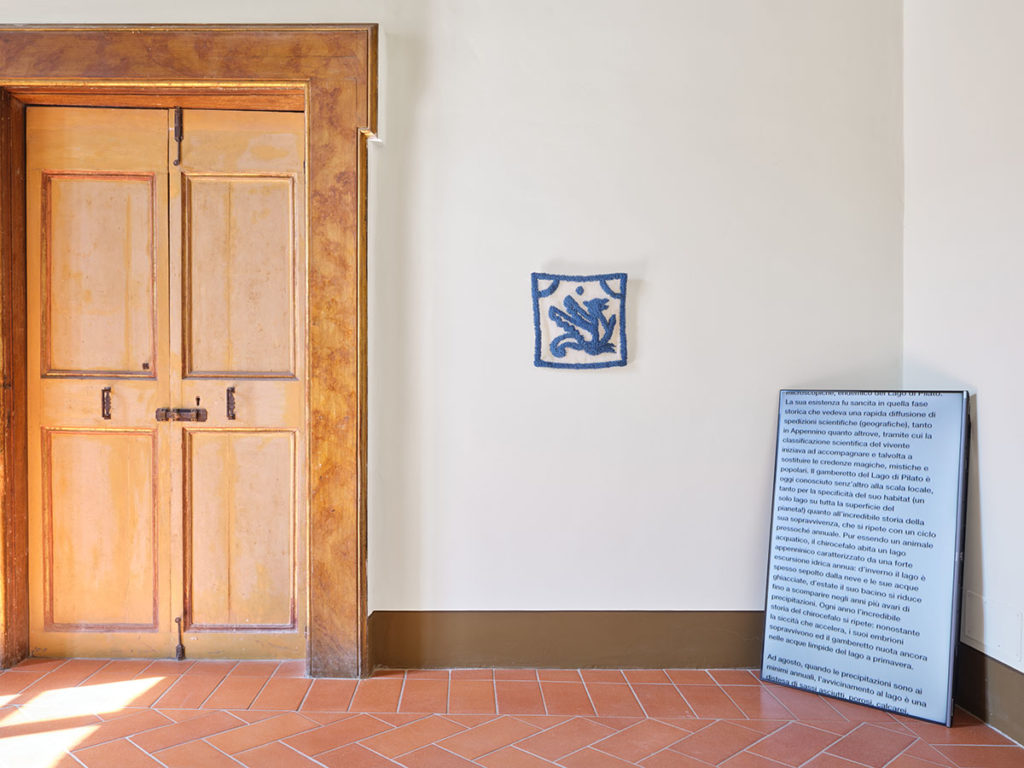
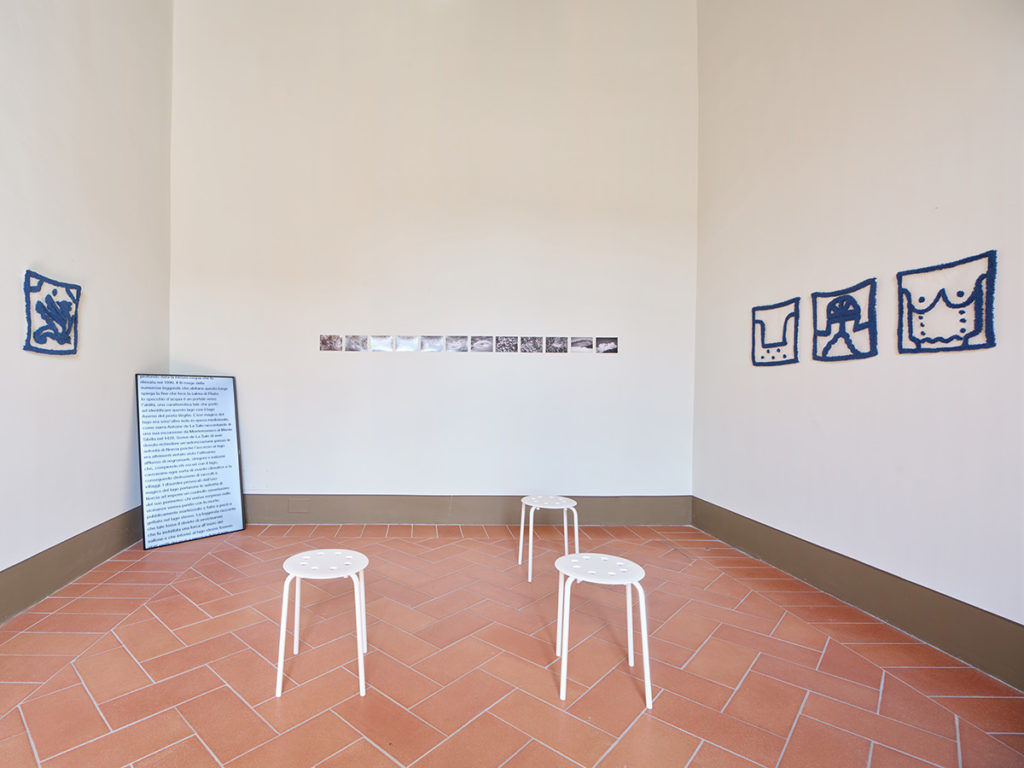
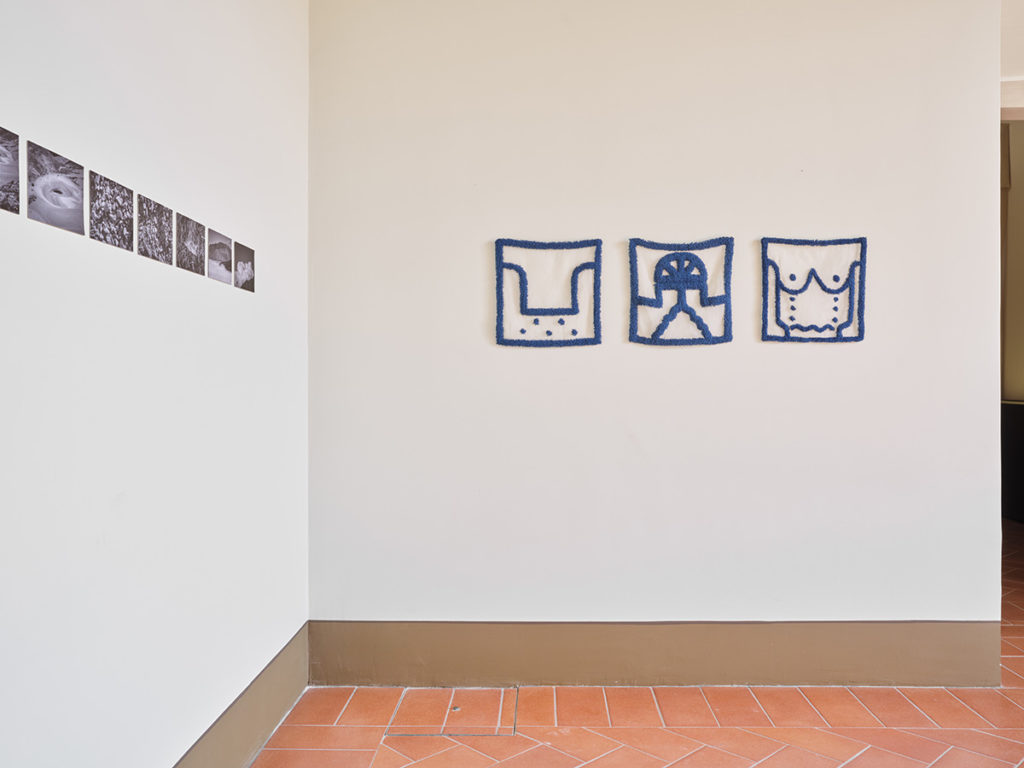
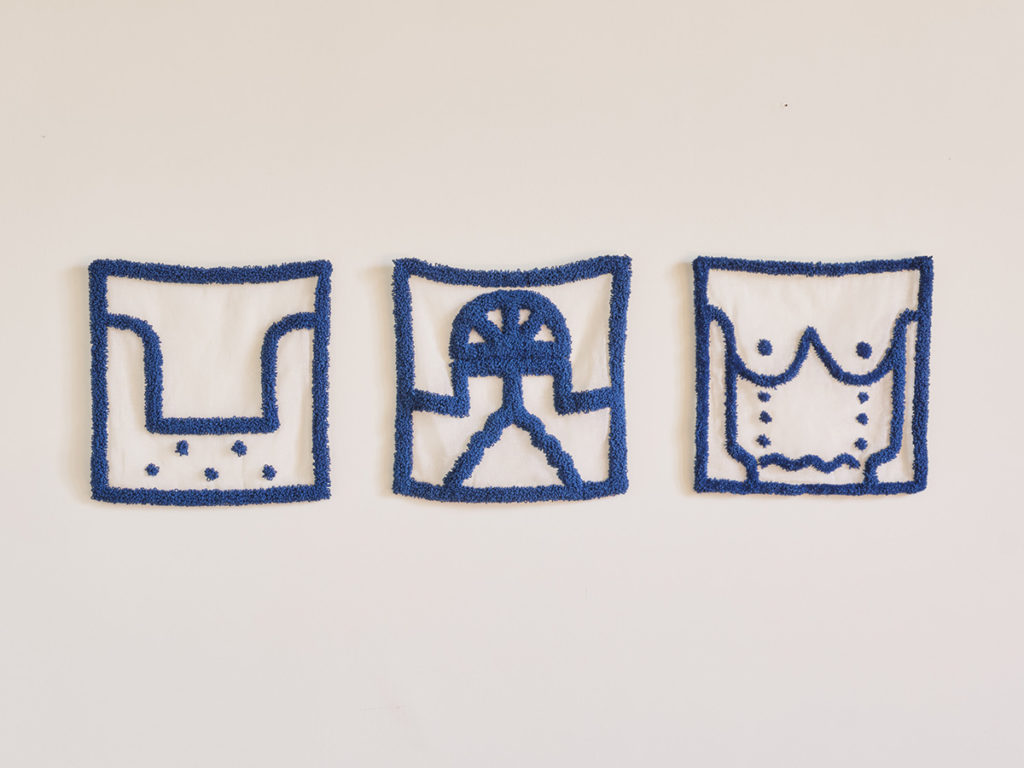
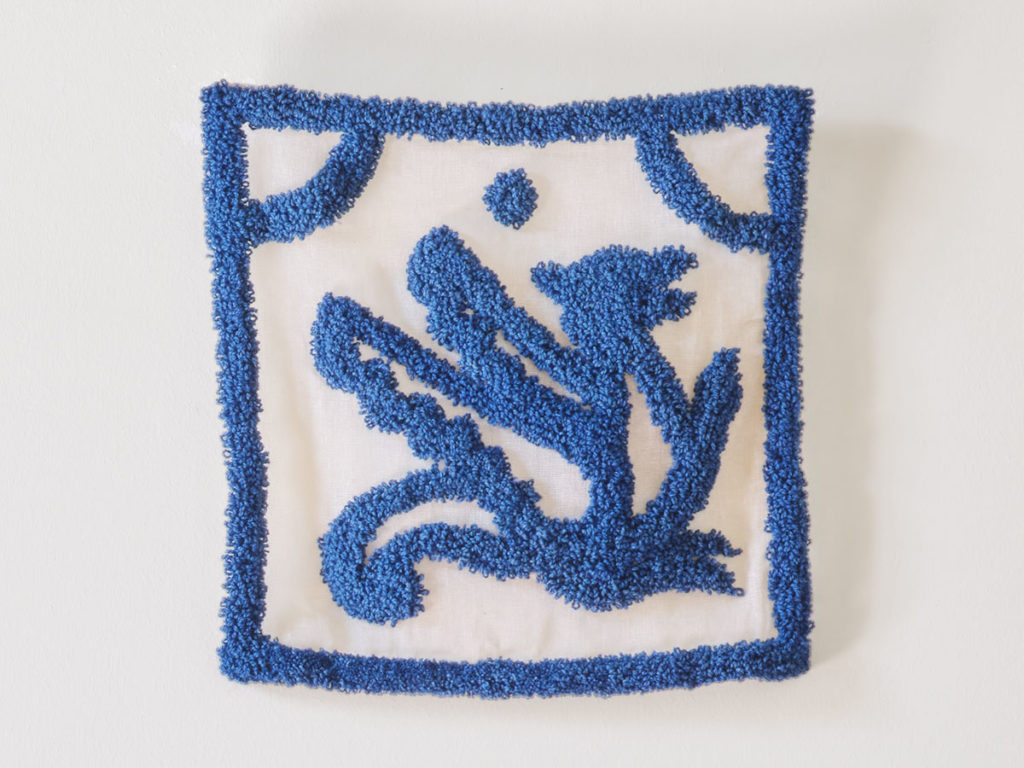
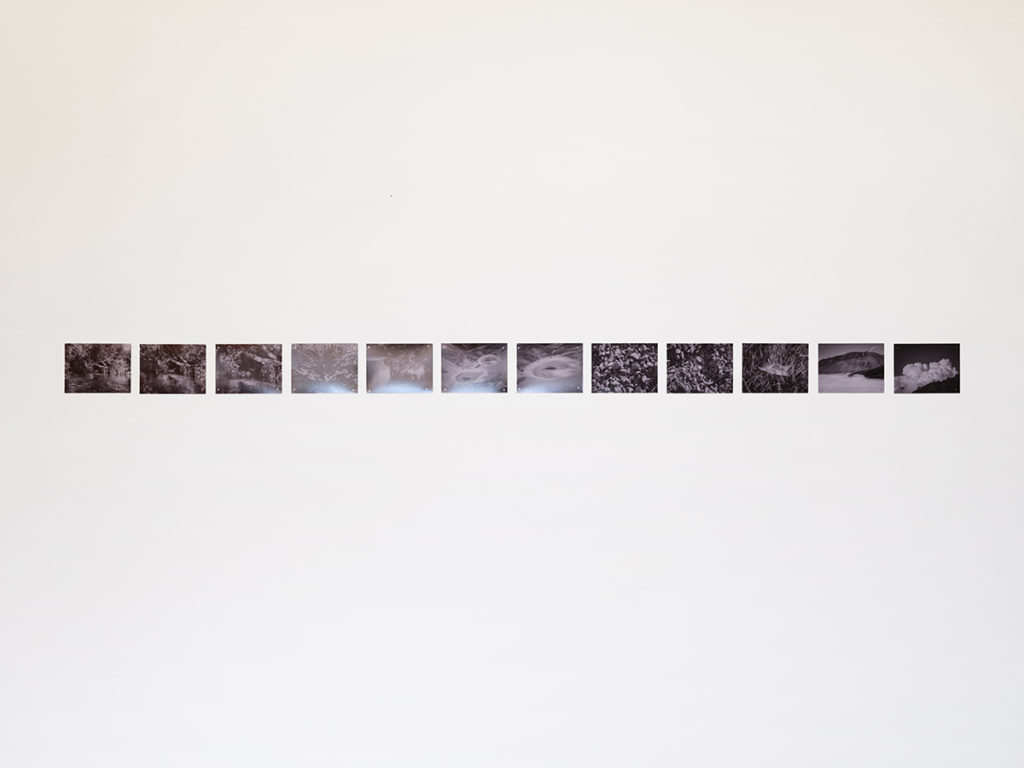
The second Umru room in MUTECO presents research photographs, tapestries and texts which will be compiled in a forthcoming publication. The publication will pivot on five extended texts by Valz Gris titled Cura (Care), Conflitto (Conflict), Dialogo (Dialogues), Sopravvivenza (Survival), and Mito (Myth). The texts elaborate on the five central research stories from which the tapestry and audio-installation take their inspiration. The screen shows the Sopravvivenza and Mito stories.
The project has been developed during a series of research residencies hosted by the Mahler & LeWitt Studios, beginning in 2022. Ceccherini, who first visited Spoleto as part of Lucy Orta’s ‘Art for the Environment’ program with the University of the Arts London, has collaborated with French textile designer and natural dyeing expert Maïté Oucèni to dye the wool needed for the tapestry. Oucèni, who was a resident at the Mahler & LeWitt Studios in 2022 in partnership with the Ethical Fashion Initiative and supported by the Carla Fendi Foundation, hosted a public workshop with Ceccherini and dyed the wool using woad, a blue pigment indigenous to Italy and harvested in Umbria until the global Indigo market took over.
Cecilia Ceccherini’s (Turin, 1991) practice intersects crafts with conceptual art. She is interested in revealing the relations that humans entertain with other living beings through art practice and design. After graduating in Decorative Arts at the Albertina Academy of Fine Arts (Torino, Italy), in 2019, she completed an MA in Textile Design at the Chelsea College of Arts (London UK) where she specialised in weaving. There she began developing textiles and tapestries that, as everyday objects which also have sculptural and pictorial qualities, effectively combine her aesthetic and scientific approaches. She intersects her practice with art education, working with schools with a particular interest in collective and collaborative practices.
Alberto Valz Gris (Turin, 1990) works at the intersection of urban geography and the visual arts. He holds an M.Sc. in Architecture (Politecnico di Torino), an MA in Fine Arts (Sandberg Instituut, Amsterdam) and a PhD in economic and political geography (Politecnico di Torino). His leading research interest lies in the geographies of socionatural metabolism as a way to chart the diverse, complex and dynamic interactions between humans and the environment at the local and regional scale. Combining theoretical reflection and on-field research into textual contributions and audiovisual productions, his practice as a geographer engages with critical analysis as an attempt to reinvent the relationships that humans entertain with their surrounding environment.
Henry Albert (Bethesda, 1989) is a screenwriter and filmmaker who works between Italy and the rest of the world. His work has always bridged writing and video, editorial and film. He trained in London in the newsroom of Monocle Magazine, before starting a freelance career between Turin, Milan and Berlin as a journalist, author and art director, collaborating with global media and brands. He has published articles and shot documentaries for various institutions and newspapers such as The New York Times, Monocle, Vice, and Haus der Kulturen der Welt.
giulia deval (Turin, 1993) is a singer and sound artist who works between experimental music and contemporary art. Her research spans through various formats such as concerts of imaginary characters, performance-lectures, audiovisual installations and workshop-based activities for voices and magnetic tapes set in science fiction scenarios. Her work has been presented across Europe and Mexico during artistic residencies, interdisciplinary projects and international tours.
Spoleto Festival dei Due Mondi The Festival dei Due Mondi was founded by the opera composer Gian Carlo Menotti in 1958 and was one of the first multi-disciplinary arts festivals of its type. It quickly garnered international recognition for developing and promoting avant-garde art. It takes place in June and July each year and makes use of the numerous exhibition and performances venues boasted by the town of Spoleto – including the Teatro Romano, two opera houses, and several churches. The director of the festival is Monique Veaute. festivaldispoleto.com
Musei Civici di Spoleto Spoleto’s museum network offers a comprehensive overview of the historical- cultural heritage of the city and region, which has national and international significance. The director is Saverio Verini (formerly MACRO and Fondazione Memmo). There are ten museums under its remit. These include the Palazzo Collicola: an important collection of 20th century and contemporary visual art with works by Sol LeWitt, Alberto Burri, Beverly Pepper, Alexander Calder, among many others.
MUTECO – The Museum of Textile and Costume brings together artefacts from the 14th to the 20th century, many of which were collected by the textile historian Lucia Portoghesi. Among the Umbrian textiles are extraordinary early Perugian tablecloths, similar to those reproduced in paintings by artists such as Leonardo da Vinci, Ghirlandaio, and Giotto. The museum also includes important regal, religious and domestic from Italy and abroad.
